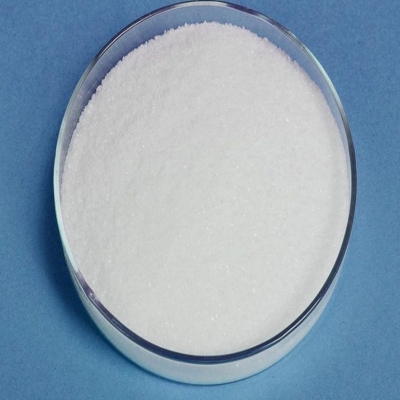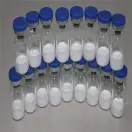-
Categories
-
Pharmaceutical Intermediates
-
Active Pharmaceutical Ingredients
-
Food Additives
- Industrial Coatings
- Agrochemicals
- Dyes and Pigments
- Surfactant
- Flavors and Fragrances
- Chemical Reagents
- Catalyst and Auxiliary
- Natural Products
- Inorganic Chemistry
-
Organic Chemistry
-
Biochemical Engineering
- Analytical Chemistry
- Cosmetic Ingredient
-
Pharmaceutical Intermediates
Promotion
ECHEMI Mall
Wholesale
Weekly Price
Exhibition
News
-
Trade Service
Medicine Network August 14 - Rare diseases usually have a low incidence, a wide variety, mostly due to genetic defects.
, there is a lack of systematic research and summary of the pathogenesis and treatment of rare diseases in various countries and regions, and there is also a lack of effective treatment options and guidelines for clinical diagnosis and treatment.
the same time, drug research and development for rare diseases, due to the small number of patients, small market demand, high research and development costs, low market returns, pharmaceutical companies can not be enthusiastic about research and development resources into it.
, how to stimulate pharmaceutical companies in the field of rare diseases innovation momentum, is worthy of in-depth thinking.
, China has not yet formulated a systematic policy to encourage enterprises to carry out drug innovation for rare diseases, patients mainly rely on imports.
and some developed countries and regions have introduced incentives to promote drug research and development for rare diseases.
, the tax credit policy in the Orphan Drug Act (ODA) is a cause for concern.
attracts companies to invest in the development of rare disease drugs On January 4, 1983, the ODA of the United States was officially launched to encourage the development and sale of rare disease drugs, defining rare diseases as "rare diseases that affect less than 200,000 people in the United States".
, more than 730 rare disease drugs have been approved for sale in the U.S. in the 35 years to 2018, according to the U.S. Department of Statistics.
before the bill was passed (before 1983), the United States approved only 34 drugs to treat rare diseases.
the bill called for economic incentives to stimulate the development and sale of drugs for rare diseases.
these include grants, i.e. approximately 12 to 15 grants per year to academic researchers or companies involved in rare diseases, and tax credits, i.e. 50% of the cost of clinical trials for pharmaceutical companies in the development of orphan drugs, in December 2017 The Tax Cuts and Employment Act, released by the U.S. Congress on the 15th, further proposes to reduce the tax credit for research and development of rare diseases to 25% of the cost of qualified clinical trials;
researchers have found that a 50 per cent tax credit for rare diseases has facilitated the development of up to a third of rare disease medications.
tax credits are clearly supported by tax credits, which mean that taxpayers can deduct a certain amount from the amount of tax owed to the government.
deductions and exemptions reduce taxable income, tax credits reduce the amount of tax actually owed, often resulting in better benefits than tax cuts.
For example, assuming that a pharmaceutical company's taxable income is $40,000 and the applicable tax rate is 50 percent, when both the tax credit and the tax deduction are 50 percent, the final tax credit reduces the tax by $20,000 and the tax deduction by $10,000.
The Tax Credit For Rare Diseases (ODTC) is an important part of the 1983 ODA Act, which subsidizes the "development costs of rare diseases" by providing non-refundable tax credits that amount to "up to 50% of the cost of qualified clinical trials associated with the development of designated rare diseases."
2018, the tax credit for rare-disease drugs will be reduced to 25 percent of the cost of qualified clinical trials.
Eligible clinical trial costs are the costs of conducting clinical trials of rare disease drugs before they go on the market, the costs associated with clinical trials conducted outside the U.S. are only covered if there are insufficient numbers of trial participants in the U.S., and ODTC eligibility fees can no longer be used for general policy research and development tax credits.
the implementation of ODTC to promote investment in research and development for rare diseases and to encourage rare disease treatments from the laboratory to the market by reducing development costs.
for rare diseases, the cost of clinical trials alone can result in thousands of dollars in treatment for every person diagnosed with the disease.
1996-2011, total ODTC spending on rare disease drug developers increased from $31 million to more than $750 million.
specifically, ODTC attracts additional investment in research and development for rare diseases by reducing the cost of capital for drug development for rare diseases.
found a significant correlation between the cost of capital and the level of investment, and that industries with lower capital costs were more likely to attract more investment.
and taxes raise the cost of capital, companies must earn more revenue to pay taxes, while also paying competitive returns to investors.
ODTC's role is to attract more investment by reducing taxes on research and development of rare diseases.
not every new drug will be successfully developed, additional investment is expected over time to lead to a gradual increase in the number of new drugs approved for rare diseases.
China's implementation of ODTC at the right time, China has introduced a number of policy measures to encourage research and development of rare diseases, clearly for the treatment of rare diseases drug registration applications to be given priority review and approval, and the first batch of 21 rare disease drugs and 4 raw materials, reference to anti-cancer drugs on the import link reduced by 3% VAT, domestic links can choose to be based on 3% simple method, these measures have produced positive results, but has not yet introduced a rare disease tax credit.
tax credits adopted in China's current tax law are mainly to avoid double taxation, while tax incentives to encourage enterprises to research and development are mainly added deductions.
tax credits are not affected by the corporate income tax rate compared to the plus deduction.
, on the basis of china's current national conditions, the relevant departments of the state issued a tax credit policy on the research and development of rare disease drugs.
in the process of encouraging the development of tax credits for rare diseases, we should focus on the following three issues.
is the determination of the basis for calculating tax credits.
enterprises in the early stage of large investment, higher risk, at this stage, the need for corresponding incentives to stimulate the willingness of enterprises to invest.
The U.S. is a tax credit for qualified clinical trial costs, and Japan's tax deduction for rare disease drug research and development companies is set at 6% of the total cost of research and development for rare disease drug use after deducting the fund, these ideas can be used for reference.
is the type of tax credit considered, refundable or non-refundable.
is of time value, if the enterprise can get a tax refund that year, it can profit from it in time.
start-ups may not have enough tax liability or profitability to benefit from tax credits and often need more policy support.
is to maintain the stability of the policy.
-term incentive effect of tax incentive policy is better, which can effectively stimulate the enthusiasm of pharmaceutical companies to carry out research and development.
But tax-based incentives do not have pre-defined spending limits, which can become an "expensive burden" for governments and taxpayers as time between policy implementation, so the right criteria and proportions should be chosen at the out-of-date policy formulation to better safeguard policy stability in order to achieve the long-term effects of tax incentives.
the difficult issues that cannot be implemented in one step at present can be solved in stages.
(Author: Dalian Medical University)







